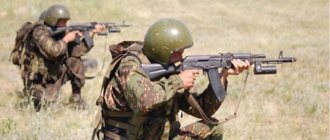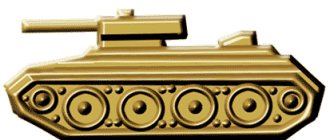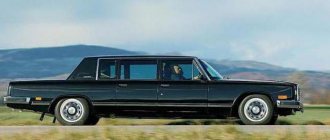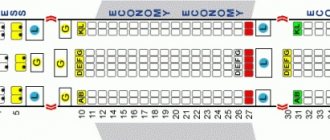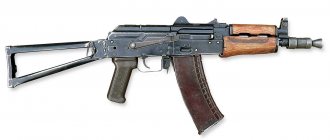This term has other meanings, see Mace (meanings).
The request for "Cudgel" is redirected here; see also other meanings.
The request "Baton" is redirected here; see also other meanings.
Ancient Japanese club
Mace
[1] (diminutive from the common Slavic
pala
,
stick
“club, staff, log”), or
baton
,
club
,
oslop
,
oslopina
,
druchek
[2] - a cold weapon with impact-crushing action, derived from an ordinary wooden stick.
The weapons of the poorest foot warriors of the Russian army were oslops - clubs
, studded with nails [3] or covered with iron.
Clubs were also used in judicial duels. In this context, they are mentioned in the Code of Laws of 1497: “but the attorney and surety should not keep armor and
clubs
and oslops in their possession
.
Methods of making fire by Neanderthals
There are only five of them, namely:
1. Fire plow. This is a fairly fast method, but requires significant physical effort. The idea is to move a wooden stick along the board with a strong pressure. The result is shavings, wood powder, which, due to the friction of wood against wood, heats up and smolders. At this point, it is combined with highly flammable tinder, then the fire is fanned.
2. Fire drill. The most common way. A fire drill is a wooden stick that is used to drill into another stick (a wooden plank) located on the ground. As a result, smoldering (smoking) powder appears in the hole. Next, it is poured onto the tinder, and then the flame is fanned. Neanderthals first rotated the drill between their palms, and later the drill (with its upper end) was pressed into the tree, covered with a belt and pulled alternately on each end of the belt, rotating it.
3. Fire pump. This is a fairly modern, but rarely used method.
4. Fire saw. It is similar to the first method, but the difference is that the wooden plank is sawed (scraped) across the fibers, and not along them. The result is the same.
5. Carving fire. This can be done by hitting one stone against another. As a result, sparks are formed that fall on the tinder, subsequently igniting it.
Hunting of ancient people
Neanderthals mainly hunted mammoths. He did not live to this day, but everyone knows what this beast looks like, since rock paintings with its image were found, painted by people of the Late Paleolithic. In addition, archaeologists have found the remains (sometimes even the entire skeleton or carcasses in permafrost soil) of mammoths in Siberia and Alaska.
To catch such a large beast, the Neanderthals had to work hard. They dug pit traps or drove the mammoth into a swamp so that it would get stuck in it, then finish it off.
Also a game animal was the cave bear (it is 1.5 times larger than our brown one). If a large male rose on his hind legs, then he reached 2.5 m in height.
Neanderthals also hunted bison, bison, reindeer, and horses. From them it was possible to obtain not only the meat itself, but also bones, fat, and skin.
Neanderthal tools
They differed slightly from those used by their predecessors. However, over time, the tools of ancient people became more complex. The newly formed complex gave rise to the so-called Mousterian era. As before, tools were made primarily of stone, but their shapes became more diverse, and the turning technique became more complex.
The main weapon preparation is a flake formed as a result of chipping from a core (a piece of flint that has special platforms from which the chipping was carried out). This era was characterized by approximately 60 types of weapons. All of them are variations of 3 main ones: scraper, rubeltsa, pointed tip.
The first is used in the process of butchering an animal carcass, processing wood, and tanning hides. The second is a smaller version of the hand axes of the previously existing Pithecanthropus (they were 15–20 cm in length). Their new modifications had a length of 5–8 cm. The third weapon had a triangular outline and a point at the end. They were used as knives for cutting leather, meat, wood, and also as daggers and dart and spear tips.
In addition to the listed species, Neanderthals also had the following: scrapers, incisors, piercings, notched, and serrated tools.
Bone also served as the basis for their manufacture. Very few fragments of such specimens have survived to this day, and entire tools can be seen even less frequently. Most often these were primitive awls, spatulas, and points.
The tools differed depending on the types of animals that Neanderthals hunted, and, consequently, on the geographical region and climate. Obviously, African tools were different from European ones.
Climate of the area where Neanderthals lived
The Neanderthals were less fortunate with this. They found a strong cold snap and the formation of glaciers. Neanderthals, unlike Pithecanthropus, who lived in an area similar to the African savanna, lived rather in the tundra and forest-steppe.
It is known that the first ancient man, like his ancestors, mastered caves - shallow grottoes, small sheds. Subsequently, buildings appeared located in open space (the remains of a dwelling made from the bones and teeth of a mammoth were found at a site on the Dniester).
LIFE OF PRIMITIVE PEOPLECHAPTER I. PRIMITIVE COMMUNAL SYSTEM
page 6
Paragraph 3. Occupations and lifestyle of the ancient people
The most ancient people
People appeared on earth 700-600 thousand years ago. The earliest people were very different from the people of our time. Their fingers were clumsy; With his own hands, a person could do the simplest work, grab, hit, dig the ground. The forehead of the ancient man was low and sloping; the brain was significantly smaller than the brain of modern humans. With a few abrupt sounds, people expressed anger, fear, called each other for help,
A man, chipping small pieces from a stone, sharpened its edge. With the edge of a stone, a man dug the ground, split bones, chopped meat, and cut a club out of wood. Such stones, processed by ancient man, are called hand axes. The man did not have strong claws and powerful paws, like predatory animals, but the sharpened stone was stronger than any claws or teeth, and the blow of the club was stronger than the blow of a bear's paw.
Activities and life of ancient people
A sharpened stone and a club were the first tools; With their help, people obtained food for themselves, and also protected themselves from predatory animals. On the banks of rivers and lakes, in thickets of bushes, people dug up edible roots and insect larvae, hunted small animals, tore open their burrows, and looked for fruits and bird eggs. In search of food, people wandered from place to place. They had neither permanent homes nor clothing; they did not know how to use fire. They could live only in areas with a warm climate. The earliest people are called primitive people.
Primitive Herd
The ancient people could not live alone; Without each other's help, they would not have gotten food for themselves, but would have become prey to predatory animals. Therefore, people lived in groups, collecting food together and protecting themselves from large predators. Groups converged and dispersed, like herds of wild animals; Such a group of primitive people is called a primitive herd. Each herd contained no more than a few dozen people; it was difficult for more people to feed themselves in one area.
The most ancient man was distinguished from animals by the ability to make tools;
not a single animal could or can make even the simplest tool. Paragraph 4. Primitive hunters
Mastery of fire and improvement of tools
Primitive people saw fire more than once during forest fires that arose from lightning strikes and during volcanic eruptions. For a long time, people were afraid of fire, but then they noticed that fire gives warmth and protects from predatory animals. People began to make fire and make fires. Since fires and volcanic eruptions were rare, people constantly maintained the fire they had produced, not letting it go out.
Later they learned to make fire by rubbing one piece of dry wood against another.
Processing stones for hundreds of thousands of years, primitive people learned to make various tools from them: spear tips, scrapers for cleaning skins, plates that served as knives.
The entire time when people made their tools from stone is called the Stone Age. ( *1
)
NOTE 1
: It is necessary to distinguish
the Stone Age
, which lasted hundreds of thousands of years, from the century -
centuries
.
Hunting for large animals
Having learned to make fire and make it from stone, people were able to hunt not only individual animals, but also herds of bulls, deer, and horses. However, such a hunt could only be successful with the participation of tens or even hundreds of people. Having discovered a herd of deer or bulls, the hunters hid in ambush. Other hunters, waving spears and burning branches, drove the herd towards those hiding. Having surrounded the animals, the hunters killed them with spears and clubs. Often the hunters drove the herd to the cliff; the animals, falling from it, were broken, and the hunters finished them off.
Hunting large animals became the main occupation of people.
Cooling on the ground
Thanks to the fact that people owned fire and hunted, they did not die during the cold snap that began throughout the northern hemisphere about 100 thousand years ago. The cold snap was especially severe in Europe. Winters here have become long and frosty. The entire northern half of Europe was covered by a glacier - a huge layer of ice up to two kilometers thick. To the south of the glacier there were tundras with sparse vegetation. Reindeer and mammoths grazed in them - huge elephants with long tusks, covered with red hair.
People hunted mammoths. They drove the mammoth to a steep cliff or to a deep hole covered with branches and grass. Having fallen there, the mammoth broke its legs, and people finished it off.
Life of hunters
Hunting gave people not only food, but also clothing, and often housing. They used animal skins, cleaned of meat and fat, as clothing. People settled in caves. They got the caves only after fights with the huge bears, lions and other predatory animals that lived there. Often people died in these battles. Later they began to build dugouts - dwellings half dug into the ground. People often made the walls of dugouts from skulls and other large mammoth bones, and the roofs from tusks, covering them with grass and skins.
Women made clothes, cooked food, and collected edible plants. Children helped them. Everything obtained by men and women was distributed among all people living in one group.
Development of primitive man
Thanks to the constant work of primitive people over hundreds of thousands of years, the fingers on their hands became more and more dexterous. A person could not only hold a stone or a club in his hand and hit it with it, but could also use stone knives to cut various objects from bone and horn.
In order for the work of primitive people to be successful, they needed to observe a lot and think about a lot. They had to be able to choose stones suitable for making tools, distinguish between edible and poisonous plants, study the habits of the animals they hunted, and know much more. Therefore, through work, the human mind developed, and his brain increased.
Along with the development of people's minds, their speech developed. When working together, people needed to contact each other very often: explain how to work, give orders, ask for advice. Therefore, during work, new words appeared and coherent speech emerged.
Gradually, primitive people became the same as people of our time.
Friedrich Engels famously said that “labor created man.” Paragraph 5. Formation of the family
Discoveries and inventions of people
Along with stone tools, people began to make tools from bone and horn: needles, awls, harpoons. It was more successful to catch fish with a mono harpoon; a fish pierced by a harpoon could not escape from it and became human prey.
Noticing that bent trees straightened with great force, people began to make bows from flexible rods. With a bow and arrow that hit animals at a considerable distance, the hunt was much more successful than before.
By attaching a sharpened stone to a stick, people made an ax; a blow with an ax was much stronger than a blow with a simple stone. Later they began to drill a hole in the stone with the bone, adding wet sand to the stone. With stone axes it was possible, although with great difficulty, to cut down trees and build houses and ships. The first vessel was a raft tied together from two or three tree trunks; on it people sailed close to the shore to fish. Then they began to make boats; each boat was made from a whole tree trunk.
Family and tribe
Despite the improvement of tools, people could not live alone. To hunt for food, carve a boat from a tree trunk, and build a home, people had to work in large groups; at the same time, they needed to understand each other well and act together. Each group consisted of relatives - relatives. All relatives worked together and divided among themselves everything they mined. The group had common property: housing, boats, animal skins, food supplies.
A group of relatives who lived and worked together and had common property is called a clan or clan community. The clan was ruled by elders - the most experienced and wise of the relatives. They acted in the interests of the entire clan. Therefore, the elders enjoyed general trust, and the entire clan unquestioningly followed their orders.
Several clans living in one area made up a tribe. The entire tribe spoke the same language and had common customs. The elders of the clans gathered in a council, which allocated hunting and fishing places to the clans. To resolve particularly important matters, the elders convened meetings of the entire tribe.
The emergence of religion
Over hundreds of thousands of years of living on earth, primitive people learned a lot in the fight against nature; they defended themselves from severe frosts, defeated the largest animals; rivers and lakes were no longer insurmountable obstacles on their way. However, primitive people were powerless against diseases and natural phenomena such as earthquakes, thunderstorms, floods, forest fires, and therefore experienced deep fear of them.
Gradually, people began to look for the causes of the natural phenomena around them, but in many ways they still did not know how to figure it out. Primitive people thought that there were powerful gods who caused thunder and lightning, helped or hindered people in hunting, and sent diseases to them. People asked the gods to send them luck in the hunt and to cure the sick.
Not understanding what sleep and death are, people thought that an invisible “soul” lived in a person. During sleep, it flies out of the body, and with its return, the sleeper awakens; the soul also leaves the body of the deceased, but it can return to it. The souls of deceased elders seem to continue to help and protect their family. They were worshiped just like gods.
So, several tens of thousands of years ago, as a result of man’s powerlessness in the face of natural phenomena incomprehensible to him, religion was born - belief in gods, supposedly governing nature and the lives of people.
Paragraph 6. The beginning of cattle breeding and agriculture
The movement of people north
About 10 thousand years BC. e. Warming began in the northern half of the globe, and gradually the same climate as exists in our time was established. The glacier was melting, the earth was freed from under the ice. Animals accustomed to the cold climate moved to the far north. Mammoths became extinct.
As the glacier melted, people, in search of new places for hunting, settled the vacated land and gradually moved north. Each clan settled in a separate village, closer to hunting and fishing grounds. The village consisted of several huts or dugouts. In the middle of the hut there was a fireplace made of clay or stones. In the village there was often an image of a god made of stone or wood - the patron saint of the clan.
Taming animals
Near ancestral villages or wild dogs that fed on the remains of people's food. With their barking, the dogs warned people that large predators were approaching the village. Gradually, the dogs got used to people, began to live in the village itself and accompany people on hunts. The dog became the first domestic animal - a companion and assistant to the hunter.
Thanks to the bow and arrow, people were better supplied with meat than before. Therefore, hunters often did not kill the caught piglets, kids, calves and other young animals, but brought them to the village and kept them behind fences. Gradually, people domesticated and began to breed pigs, goats, sheep and cows.
Hoe farming
Women, while collecting edible plant grains, noticed that grains that fell into loose soil did not die, but germinate and then produce new grains. Then the women began to loosen the soil with hoes, grind clods of earth with their hands and bury the grains in the ground. This type of farming is called hoe farming. Stone axes were used to clear forest and bushes from areas for sowing. The collected grain was ground into flour with stones. Hoe farming required hard, persistent labor, and the harvest was very poor.
Agriculture initially arose in countries with hot climates, in the valleys of large rivers.
Here there were favorable conditions for farming: fertile soil, plenty of heat and water. WHAT IS PRIMITIVE COMMUNITY?
Primitive people had no other tools than those made of stone, wood, and later also of bone and horn. With such tools, people could barely provide themselves with food. To obtain their livelihood, they first either formed primitive herds, and later tribal communities. They had common property. The most experienced and respected people supervised hunting and fishing, distributed among relatives what they obtained together. This order of life is called the primitive communal system.
People lived in a primitive communal system for hundreds of thousands of years - they worked together, owned common property and were equal to each other.
CHAPTER II. ANCIENT EGYPT (Page 14)

